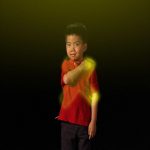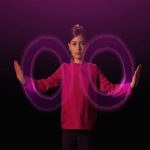Drawing in part from the burgeoning field of relational neuroscience, CalmConnect is the first program to operationalize the work of Stephen Porges, Matthew Lieberman and Naomi Eisenberger, Ami Klin, VS Ramachandran, Gordon Allport, and Fiona White. CalmConnect is a patented system that uses music, rhythmicity, patterns, repetition, the expressive features of emotion, and movement in a unique way, designed to increase compliance and effectiveness. This integrated process supports a number of bio-physiological and neurological functions in order to activate the parasympathetic nervous system and build neural networks for social connectedness.
The Science of Fight or Flight
When we’re in ‘fight or flight’ it’s impossible to have successful relationships with other people or to learn new things.

CalmConnect, Safety, and the Vagus Nerve
CalmConnect connects users to the salient aspects of human connection, emotion, and positive social engagement (facial expressions and eye contact, musical prosody in higher frequencies shared by the female voice and simple, rhythmically attuned movements – gestures) without the threat of a live, human being.

Affiliation Equals Safety
Loneliness is painful. Professor Robert Waldinger, Director of the Harvard Study of Adult Development, one of the world’s longest studies of adult life, wrote that “loneliness kills. It’s as powerful as smoking or alcoholism.”

Audiovisual Synchrony
CalmConnect is a compelling sensorimotor program that uses AVS to help children on the autism spectrum. Visual patterns, rhythmicity, music, and movement draw each child in as they participate in the pattern themselves, becoming part of a larger social group. In addition to being an effective tool for self-regulation, this patented system has been shown to increase speech and language, imitation, eye contact, and socialization in children with autism spectrum disorder.

From Me To We
Its more fun to play when you’re on the same team. Positive, safe social connections develop through shared synchronicity that comes from facial expressions, eye contact, attunement, activating mirror neurons, and moving rhythmically with others. When synchrony is surreptitiously produced in experimental situations it breeds feelings of ‘liking’ another person and one’s self, cooperation, and compassion, as well as success in collaborative action.

Mirror Neurons
The system that recruits neurons from other areas of the brain
